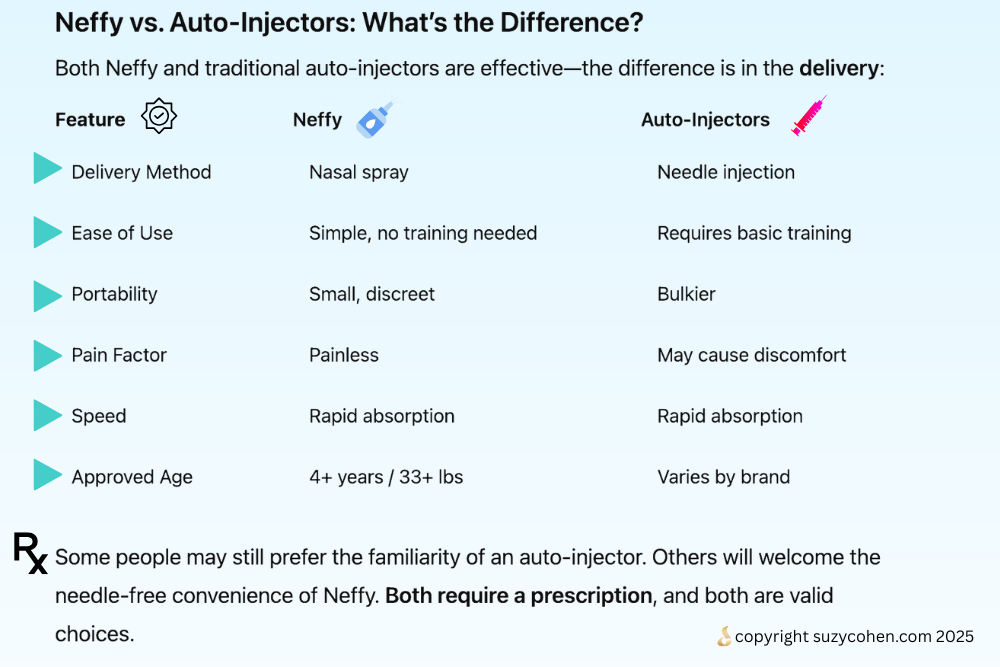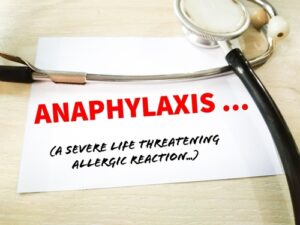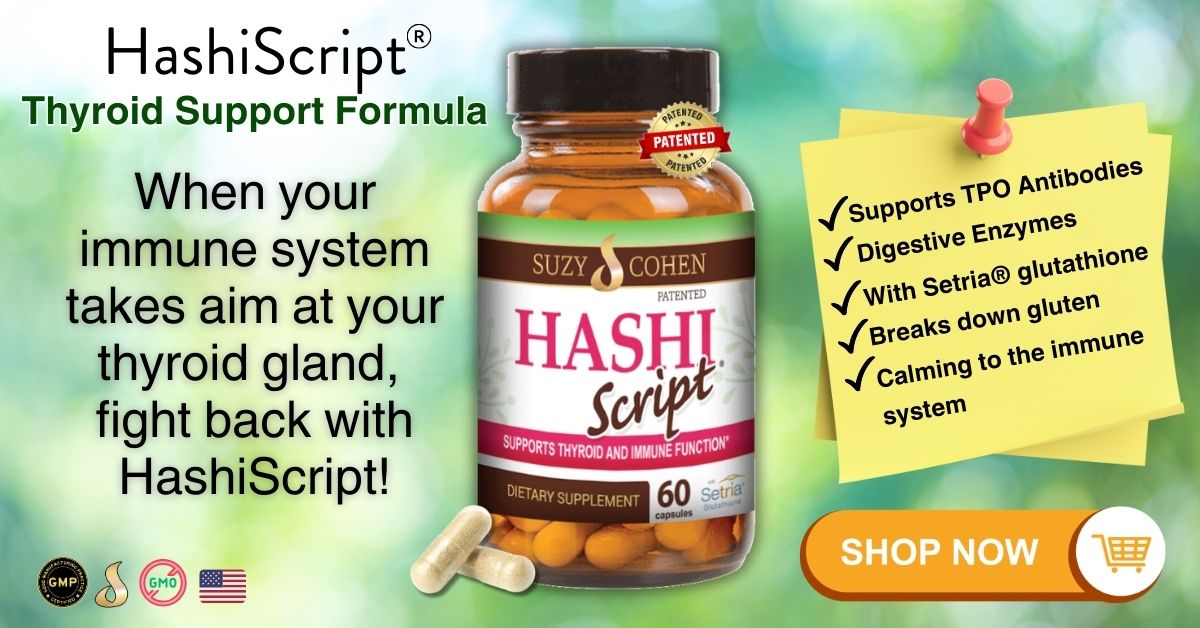What's On This Page?
ToggleNavigating the world of severe allergic reactions can be overwhelming—especially when time is of the essence and options feel limited. Enter Neffy, a needle-free nasal spray that delivers life-saving epinephrine (yes, the same ingredient in EpiPens) without the poke.
Approved by the FDA in August 2024, Neffy is now available for adults and children aged 4 and up who weigh at least 33 pounds. For families, caregivers, and healthcare professionals, this represents a significant step forward in emergency allergy management.
Let’s dive into how it works, who it’s for, and why this innovative spray may soon become your go-to for allergy emergencies. You may be wondering though, what is the biggest trigger for anaphylaxis? I’ll tell you in a minute because it’s important – some people have died from consuming it!
What Is Neffy and How Does It Work?
Neffy is a compact, easy-to-use nasal spray that delivers epinephrine rapidly through the nasal lining. Unlike traditional auto-injectors, there’s no needle, no complicated technique, and no hesitation at the sight of a sharp object. Just spray and go.
Once administered, Neffy:
- Relaxes airway muscles, making breathing easier
- Constricts blood vessels, reducing swelling and supporting blood pressure
- Boosts heart rate, counteracting the effects of anaphylaxis
The medication reaches the bloodstream within minutes, offering comparable speed to injectable epinephrine.

Who Can Use Neffy Safely?
Neffy has been rigorously tested for safety and is approved for individuals aged 4 and older, weighing at least 33 pounds.
- For children, the nasal spray can feel far less intimidating than a needle, which may encourage quicker use in emergencies.
- For adults, Neffy is as effective as injectors, with added ease of use and less chance of injury from incorrect technique.
While safe within its approved age and weight range, Neffy should always be part of a personalized action plan developed with your doctor.
 Common Triggers for Anaphylaxis (With a Functional Medicine Lens)
Common Triggers for Anaphylaxis (With a Functional Medicine Lens)
Peanuts are the leading cause of severe anaphylaxis and food allergy–related deaths in the United States. Their widespread use, low cost, and presence in both obvious and hidden forms (like sauces, snacks, and baked goods) make them especially risky.
For those with known peanut allergies, even trace amounts can trigger a life-threatening reaction, making strict avoidance and emergency preparedness essential. Anaphylaxis is triggered by these:
Foods:
- Peanuts, tree nuts (cashews, pistachios, walnuts) – this is the #1 trigger – peanuts!
- Shellfish, fish
- Milk, eggs, soy, wheat
- Sesame (now a top allergen)
Medications:
- Antibiotics (penicillin, sulfa drugs)
- NSAIDs (aspirin, ibuprofen)
- Anesthesia and imaging dyes
Natural Substances:
- Bee products (pollen, royal jelly, propolis) – Read my article, The Best Honey for Allergies: Raw Unfiltered vs. Pasteurized
- Herbs like echinacea, ginseng, and St. John’s Wort
- Latex-reactive fruits: papaya, kiwi, avocado
Insect stings and latex are also major triggers.
From a functional perspective, gut health, histamine overload, and immune dysregulation can lower your threshold for reactions even to substances you once tolerated. It’s not just about the trigger – it’s about the terrain.
Read this article I wrote on histamine overload: 8 Strategies to Reduce Histamine and Ease Hashimoto’s & Autoimmune Disorders.
Immune system triggers (and how to improve immunity) are covered in THIS ARTICLE.
 Recognizing the Signs of Anaphylaxis
Recognizing the Signs of Anaphylaxis
Symptoms can escalate fast, often within minutes of exposure. This is what you’re looking for and not everyone experiences the same set of symptoms – you probably won’t see all of these either:
- Skin reactions: hives, itching, redness or paleness
- Swelling: lips, throat, tongue, eyes
- Redness of the face
- Breathing issues: wheezing, SHORTNESS OF BREATH, chest tightness
- Digestive symptoms: vomiting, cramping, diarrhea
- Dizziness or fainting
- Drop in blood pressure or rapid heartbeat (shock)
- Anxiety or feeling of impending doom
- Just not feeling well, comes on fast
- Headache
- Watery eyes
Important: You can develop anaphylaxis even if you’ve previously tolerated a substance. Sensitization builds quietly.
What To Do In an Emergency
When anaphylaxis strikes, time is critical:
- Administer epinephrine (Neffy or Epi-Pen auto-injector) immediately if you have it
- Call 911
- Lie down flat with legs elevated (unless breathing is difficult)
- Remove the trigger if possible (like a stinger)
- Stay calm and still while waiting for emergency help
- Movement may make things worse
If it’s your first reaction and you don’t have epinephrine on hand, still call 911 immediately. First responders carry it and know how to administer it.
Even after using epinephrine, you should still go to the emergency room—a second dose or monitoring of your vitals is needed.
Why Nasal Epinephrine Matters
Neffy helps normalize allergy preparedness in daily life. It:
- Is easy to carry and use (great for schools, travel, busy lives)
- Encourages people who fear needles to actually carry epinephrine so they have it when they need it (compliance saves lives)
- Promotes conversation around severe allergies and action plans
Making epinephrine more accessible and less intimidating can improve outcomes—and save lives.
Living with Neffy: Everyday Tips
- Keep it with you at all times (handbag, backpack, pocket, even in your car)
- Let others know where it is (family, coworkers)
- Practice with a trainer if available
- Check expiration dates regularly
Consider wearing a medical alert bracelet and creating an allergy action plan with your doctor and family members. Neffy doesn’t replace avoidance, but it gives you an empowered response tool if the unexpected happens.
Summary and Final Thoughts
Neffy represents more than just a new delivery system and it’s a step forward in how we prepare for and respond to serious allergic reactions. By making life-saving treatment easier to use, Neffy empowers more people to act fast and confidently when it matters most.
Talk to your doctor to see if Neffy fits your allergy action plan. It might just be the nose spray that saves a life.
For more information visit their website: NEFFY

Suzy Cohen, has been a licensed pharmacist for over 30 years and believes the best approach to chronic illness is a combination of natural medicine and conventional. She founded her own dietary supplement company specializing in custom-formulas, some of which have patents. With a special focus on functional medicine, thyroid health and drug nutrient depletion, Suzy is the author of several related books including Thyroid Healthy, Drug Muggers, Diabetes Without Drugs, and a nationally syndicated column.


